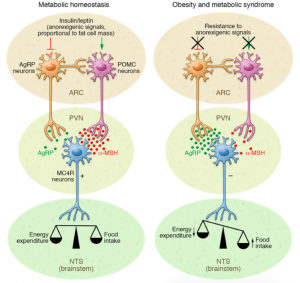Introduction to Obesity
Heart disease is the leading cause of death in the United States, with approximately 660,000 people dying of this condition every single year.[1] Heart disease is a very broad term that includes many different types of specific heart conditions. The most common type of heart disease is coronary artery disease, which is characterized by the build-up of plaque in your coronary arteries.[2] This cardiac disease is most commonly attributed to poor lifestyle habits including a lack of exercise, smoking, and a poor diet.[3] Obesity is also a major contributor to coronary artery disease (and is a potential consequence of the aforementioned lifestyle habits).[4] Obesity is a prevalent problem around the world, but it is considered an epidemic in the United States due to its prevalence. In 2018, 42.4% of adults were considered to be obese in the United States.[5]
Now that you have some basic information about obesity, I would like to use my social studies knowledge to compare and contrast obesity it two different countries: America and Mauritania. I will compare how obesity is perceived in these two countries and the prevalence of the condition, just because I think it is interesting to analyze and learn about. After delving into the social science aspect of obesity, I will then dive into the neuroscience. We will dip our toes into the water of Lake Obesity before diving head-first into the deeper waters of said lake.
Obesity in America
I already discussed some of the statistics regarding obesity in the United States, so I will not rehash those. I will, instead, discuss the general perceptions and representation of obesity in America. As I stated previously, obesity in American society is pretty common. A little under half of the population is considered to be obese. Despite its prevalence, there are a lot of negative stereotypes that accompany the image of obese individuals. Individuals who are obese are often thought to be lazy, unintelligent, and weak-willed.[6] Many individuals believe that weight is something that should be in a person’s control, but those who are obese have simply failed at remaining in control of how much they eat and exercise.[7] As I will discuss in a later section, this belief is not entirely true (hint: neurochemistry is involved).
Many people are fighting the stigma of obesity by promoting “body positivity,” which is a movement that encourages people to love their own body, no matter their weight. It also encourages others in society to embrace those who have more weight, rather than ostracizing them. The movement is not meant to promote obesity, but it is more focused on people accepting their body and not letting others judge them based on their size.[8] There are also television shows that spread awareness of the obesity problem—showing the struggles of those individuals who are obese (the television programs tend to show the extreme cases of obesity). Though there are many stigmas surrounding individuals who are obese, our society is progressing (albeit, slowly) to see obesity as more of a societal issue, rather than an issue of an individual not being able to control their eating and exercising habits.
Obesity in Mauritania
I have discussed how obesity is generally viewed in America, but I now want to discuss how obesity is viewed in a country located in West Africa. I learned about this country and some of its traditional practices in eleventh grade when I took geography. In the country of Mauritania, obesity is seen in a completely different light, compared to America. Obesity has a lot of positive stereotypes in Mauritania. In fact, women purposely become obese because of what it means for them. Obesity is equivalent to wealth in Mauritania because being obese implies you have enough money to purchase an excess of food. Women are encouraged to become obese in Mauritania because it makes the more desirable and beautiful in the eyes of potential husbands. Obesity has many positive connotations in this West African country, and I think it is an important contrast to note. If you want to learn more about Mauritania’s “fat camp” (where girls are sent to gain weight), I HIGHLY recommend watching this video. Start the video at 10:09 to skip to the part about Mauritania. I have also included a drawing below of the stereotypes associated with obesity in both countries, just as a summary.

Neuroscience of Obesity[9]
Now that I have bored you to death by comparing how obesity is seen in two different countries, I want to give you whiplash and just talk a little bit about the neuroscience behind obesity. At the Thanksgiving dinner table, my dad asked a rhetorical question about why he feels full when he still wants to keep eating. Even though it was a rhetorical question, I answered his question. When you eat food, insulin and leptin receptors in your brain send signals to AgRP neurons and POMC neurons. AgRP neurons tell you to eat and POMC neurons tell you to not eat. So, when you are hungry, AgRP neurons are activated which encourages your body to intake food and limit energy expenditure. Meanwhile, the POMC neurons are inhibited, which means the signal to stop eating is not being sent. When you feel full, it is because the signals have switched so AgRP is being inhibited, while POMC is activated which is responsible for the “full” feeling you have after eating. In obesity, however, this signaling is altered. In obesity, the leptin and insulin receptors that are responsible for sending the signals to the AgRP and POMC neurons are resistant to their respective ligand. Because the receptors are resistant to their ligand, there is no regulation of the AgRP neuron, meaning your body is always receiving the signal to eat. This signaling cascade thus perpetuates the problem of obesity because you are not receiving the signal to stop eating. Jumping back to the section about obesity in America, this unregulated signaling is why obesity is not just simply a failure to control caloric intake—there are neurochemical changes going on in the brain that perpetuate the problem. The image below illustrates this neurochemical pathway and what is going on in obesity.

[1] https://www.cdc.gov/nchs/fastats/leading-causes-of-death.htm
[2] https://www.mayoclinic.org/diseases-conditions/coronary-artery-disease/symptoms-causes/syc-20350613
[3] https://www.mayoclinic.org/diseases-conditions/heart-disease/symptoms-causes/syc-20353118
[4] https://www.mayoclinic.org/diseases-conditions/heart-disease/symptoms-causes/syc-20353118
[5] https://www.cdc.gov/obesity/data/adult.html
[6] https://www.ncbi.nlm.nih.gov/pmc/articles/PMC2866597/
[7] https://www.ncbi.nlm.nih.gov/pmc/articles/PMC2866597/
[8] https://www.bbc.co.uk/bitesize/articles/z2w7dp3
[9] https://moodle.cord.edu/pluginfile.php/1052912/mod_resource/content/2/inflammation%20and%20MD%202017.pdf